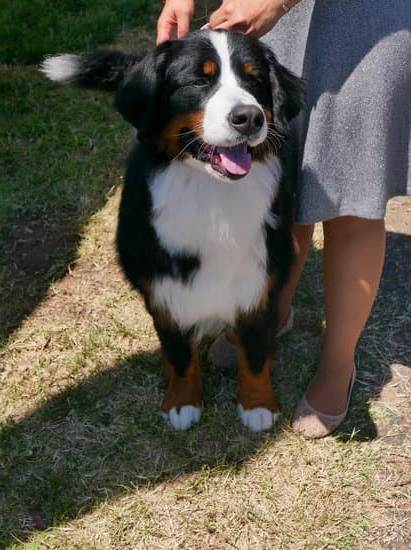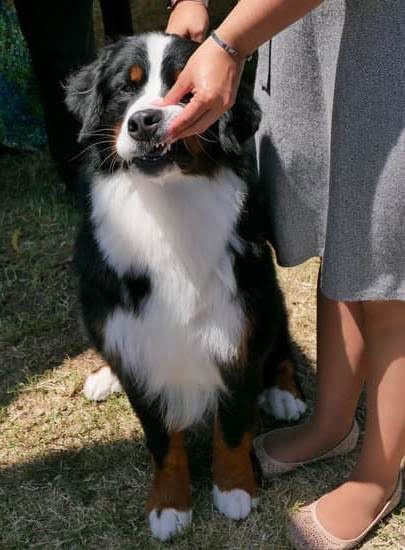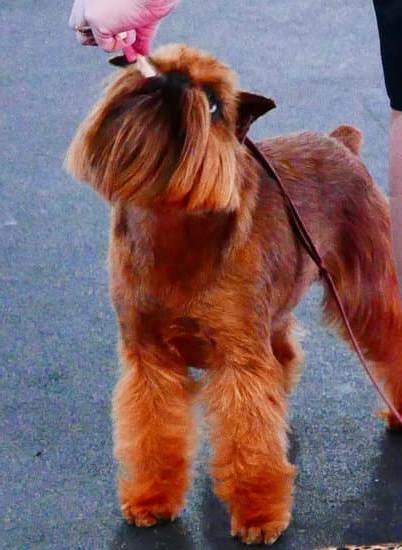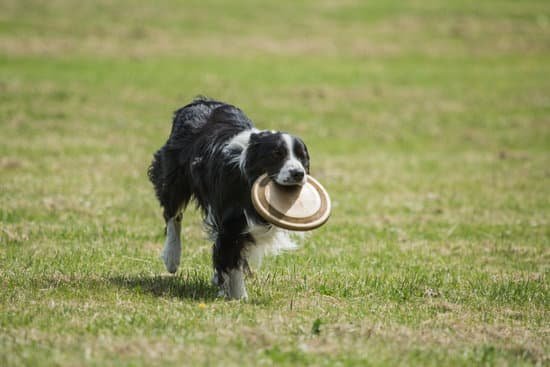Potty training a dog in the city presents its own set of challenges, as urban living can make it difficult to find the right potty spot and establish a consistent routine. Understanding your dog’s bathroom needs and behavior is crucial, as is choosing the right potty spot in the city.
Positive reinforcement techniques are essential for successful potty training, along with patience and consistency. Apartment dwellers and condo owners face additional challenges, but with the right approach, it is possible to achieve success.
Living in a city environment can make it challenging to find suitable potty spots for your furry friend. Understanding your dog’s bathroom needs and behavior is crucial for successful potty training. Choosing the right location in the city is important, as well as establishing a routine that suits urban living.
Apartment dwellers and condo owners have their own unique set of challenges when it comes to potty training their dogs in the city. It’s important to be resilient and patient when setbacks occur, and to seek out professional help or community support if needed. With consistency and positive reinforcement, you can celebrate your dog’s potty training success even in a city setting.
Understanding Your Dog’s Bathroom Needs and Behavior
When it comes to potty training a dog in the city, understanding your dog’s bathroom needs and behavior is crucial. Dogs have natural instincts when it comes to relieving themselves, and as their owner, it’s important to recognize and work with these instincts. Understanding your dog’s cues and patterns can make the potty training process much smoother and more effective.
One of the first steps in understanding your dog’s bathroom needs is to pay attention to their body language. Dogs often exhibit certain behaviors when they need to go potty, such as sniffing around, circling in one spot, or even whining or scratching at the door. By recognizing these cues, you can anticipate when your dog needs to go outside and provide them with the opportunity to do so.
It’s also important to consider your dog’s age, breed, and size when potty training in a city environment. Small breeds may need more frequent potty breaks due to their smaller bladders, while larger breeds may require longer walks for adequate exercise and bathroom opportunities. Additionally, puppies will need more consistent supervision and scheduled bathroom breaks compared to adult dogs. Understanding these factors will help you tailor your potty training routine to better suit your dog’s specific needs.
| Dog’s Bathroom Needs | Behavior |
|---|---|
| Recognizing body language | Sniffing around, circling in one spot, whining or scratching |
| Considerations based on age, breed, size | Small breeds may need frequent potty breaks while larger breeds require longer walks. |
Choosing the Right Potty Spot in the City
When it comes to potty training a dog in the city, one of the key challenges is finding the right spot for your furry friend to do their business. Unlike suburban or rural areas where there may be yards or open spaces, city living presents unique obstacles for finding suitable potty spots. Here are some tips for choosing the right potty spot in the city:
- Consider proximity: Look for a spot that is conveniently located near your residence, whether it’s your apartment building, condo, or townhouse. This will make it easier for both you and your dog to access the potty area quickly when nature calls.
- Safety first: Ensure that the chosen spot is safe and free from potential hazards such as traffic, toxic plants, or other animals. Keep an eye out for any signs indicating restricted areas for pets and be mindful of local regulations regarding pet waste disposal.
- Accessibility: If you live in a high-rise building, consider how easy it is to get to the designated potty spot with your dog. If you have a balcony or rooftop access, these can also serve as potential potty areas with proper training and reinforcement.
Ultimately, finding the right potty spot in the city requires careful consideration of practicality, safety, and accessibility. By taking these factors into account, you can create a suitable environment for successful potty training in an urban setting.
Remember that every dog is different and may have unique preferences when it comes to where they go potty. Be patient and observant as you work with your canine companion to find the perfect spot that meets both their needs and yours. With consistency and positive reinforcement, you can effectively establish a reliable routine for potty training in the city.
Establishing a Potty Training Routine for Urban Living
Consistent Schedule
The key to potty training any dog, especially in a city environment, is establishing a consistent schedule. Dogs thrive on routine, so try to take them out at the same times every day. This might mean adjusting your own schedule to accommodate their bathroom needs. By taking your dog out first thing in the morning, after meals, and before bedtime, you are setting them up for success in learning where and when they should go potty.
Leash Training
In a city setting, leash training is crucial for potty training success. Since many urban areas require dogs to be on leashes in public spaces, it’s important to train your dog to relieve themselves while on a leash. Start by bringing them to the designated potty spot on a leash and allowing them time to do their business. Gradually, they will learn that this is the appropriate place to go.
Use of Potty Pads or Indoor Grass Patches
For those living in high-rise apartments or condos with limited outdoor space, using potty pads or indoor grass patches can be an effective solution for potty training in the city. These options provide a designated area for your dog to relieve themselves indoors when getting outside is not an immediate option. However, it’s important to gradually transition them from using these indoor alternatives to going outside as they become more accustomed to the routine.
By following these tips and staying patient and consistent, you can effectively establish a potty training routine that works for both you and your dog in an urban setting. Remember that every dog is different, so it may take some trial and error before finding what works best for your four-legged friend when it comes to how to potty train a dog in the city.
Positive Reinforcement Techniques for Potty Training
Potty training a dog in the city can be challenging, but positive reinforcement techniques can make the process smoother and more effective. Positive reinforcement involves rewarding your dog for exhibiting the desired behavior, such as going potty in the designated spot. This method not only helps in potty training but also strengthens the bond between you and your furry friend.
One of the most effective positive reinforcement techniques for potty training is using treats. When your dog successfully goes potty in the designated spot, immediately reward them with a small treat and plenty of verbal praise. This creates a positive association with going potty in that specific location and encourages your dog to continue doing so.
In addition to treats, you can also use toys or playtime as positive reinforcements for potty training. After your dog goes potty in the right spot, engage in a short play session or give them their favorite toy as a reward.
This reinforces the idea that using the designated potty area leads to fun and enjoyable experiences. It’s important to note that positive reinforcement should be immediate, so make sure to praise or reward your dog as soon as they finish going potty in the right spot.
| Positive Reinforcement Technique | Description |
|---|---|
| Treats | Rewarding your dog with small treats when they go potty in the designated spot. |
| Toys/Playtime | Engaging in playtime or giving toys as a reward for using the designated potty area. |
Dealing With Potty Training Setbacks in a City Environment
Potty training a dog in the city can come with its own unique set of challenges, and setbacks are not uncommon. It’s important to remember that every dog is different, and what works for one may not work for another. Setbacks can be frustrating, but it’s crucial to remain patient and consistent in your approach.
One common setback in city potty training is the distractions and noises that come with urban living. Dogs may find it difficult to concentrate on their bathroom needs with the hustle and bustle of the city around them. This can lead to accidents inside the home or difficulties finding a suitable potty spot outside. Understanding your dog’s behavior and finding ways to minimize distractions can help address this issue.
Another setback that city-dwelling dog owners often face is the lack of outdoor space. Apartment dwellers and condo owners may have limited access to green areas for their dogs to relieve themselves. In such cases, it’s important to be creative in finding suitable potty spots within the vicinity. This could include designated pet relief areas, community gardens, or even rooftop spaces if available.
In addressing setbacks, positive reinforcement remains key in potty training a dog in the city. Rewarding good behavior and remaining consistent with your routine will help your furry friend understand what is expected of them. Remember that setbacks are a normal part of the potty training process, and with patience and perseverance, you can overcome these challenges.
| Challenges | City Living |
|---|---|
| Distractions | Noise and Hustle |
| Limited Outdoor Space | Apartment Living |
| Positive Reinforcement | Routine & Patience |
Tips for Apartment Dwellers and Condo Owners
Living in an apartment or condo in the city presents its own set of challenges when it comes to potty training a dog. Limited outdoor space and shared common areas can make the process more difficult, but with the right approach, it is still possible to successfully train your dog.
Here are some tips for apartment dwellers and condo owners on how to potty train a dog in the city:
1. Use indoor potty options: For those living in high-rise buildings or densely populated urban areas where access to outdoor spaces is limited, consider using indoor potty options such as pee pads, artificial grass patches, or even a designated litter box for small breeds. This can provide a convenient solution for times when taking your dog outside is not feasible.
2. Establish a consistent routine: Set specific times for bathroom breaks throughout the day and stick to them as much as possible. Dogs thrive on routine, so establishing a regular schedule for potty breaks can help them understand when and where they are supposed to go.
3. Seek out designated pet areas: Many apartment complexes and condo buildings in the city have designated pet relief areas or dog parks nearby. Take advantage of these spaces for regular potty breaks and allow your dog to get used to going in these designated spots.
By being proactive and creative in finding solutions that work for your specific living situation, you can effectively potty train your dog in the city and ensure that both you and your furry companion are happy and comfortable in your urban dwelling.
The Importance of Consistency and Patience in Potty Training
Potty training a dog, especially in a city environment, requires a great deal of consistency and patience from the owner. It is important to understand that dogs may take longer to adjust to their new potty routine in the city due to the distractions and unfamiliar surroundings.
Consistency in training methods, schedules, and designated potty spots is crucial for success. Additionally, patience is key as potty training takes time and it’s essential to remain calm and positive throughout the process.
Sticking to a Schedule
Consistency in potty training starts with establishing a regular schedule for your dog. Take your dog out at the same times every day, such as first thing in the morning, after meals, before bedtime, and any other times you notice your dog showing signs of needing to go. By sticking to a routine, your dog will quickly learn when and where they are expected to go potty.
Using Positive Reinforcement
Another important aspect of consistency in potty training is using positive reinforcement techniques. When your dog successfully goes potty in the designated spot, be sure to praise and reward them with treats or verbal encouragement. This reinforces the desired behavior and helps your dog understand what is expected of them.
Being Patient During Setbacks
It’s natural for setbacks to occur during the potty training process, especially in a city setting where there are many distractions. When accidents happen, it’s important for owners to remain patient and avoid punishing or scolding their dogs. Instead, continue with consistent training methods and provide plenty of opportunities for your dog to succeed. Remember that patience is key and eventually, with time and effort, your dog will become acclimated to their new potty routine in the city.
By prioritizing consistency and patience in potty training efforts within an urban environment, owners can effectively help their dogs adjust to city living while maintaining good bathroom habits.
Taking Your Dog’s Potty Training to the Next Level
When potty training a dog in the city, it’s important to take into account the next level of training: outdoor areas and public spaces. This can be particularly challenging for city dwellers who may not have immediate access to a backyard or green space for their dogs to relieve themselves. However, with some adjustments and planning, you can successfully train your dog to go potty in outdoor areas and public spaces.
Exploring Nearby Parks and Dog-Friendly Areas
One of the first steps in taking your dog’s potty training to the next level in the city is to explore nearby parks and dog-friendly areas. Take some time to research and locate parks or designated dog relief areas where your furry friend can do their business. It’s important to familiarize yourself with these locations so that you can easily bring your dog there for potty breaks.
Introducing Your Dog to Public Spaces
Public spaces such as sidewalks, streets, and urban landscapes can also serve as potty spots for your dog. However, it’s essential to introduce your pup gradually to these environments. Start by taking short walks around the neighborhood, allowing your dog to get used to the sights, sounds, and smells of public spaces. As your pet becomes more comfortable, you can slowly encourage them to use these areas for bathroom breaks.
Adapting Potty Training Techniques for Outdoor Areas
When transitioning from indoor potty training to outdoor areas and public spaces, it’s important to adapt your training techniques accordingly. Use positive reinforcement and rewards when your dog successfully goes potty outside. Additionally, practice patience and consistency as your pet adjusts to using different surfaces and environments for bathroom breaks. With time and practice, dogs can learn how to potty in outdoor areas even in the bustling city environment.
Additional Resources for City Dog Owners
Potty training a dog in the city can be challenging, especially for first-time dog owners or those who are new to urban living. While some dogs may adapt quickly to their new environment, others may require additional help and support from professionals and the community.
For city dog owners struggling with potty training, seeking professional help from a certified dog trainer or behaviorist can make a significant difference in their journey. These experts can provide personalized guidance and tailored strategies to address specific challenges related to potty training in the city. They can also offer valuable insights into understanding a dog’s bathroom needs and behavior, as well as tips for choosing the right potty spot in the city.
In addition to professional help, city dog owners can benefit from community support and resources. Joining local dog owner groups or forums can provide access to a wealth of knowledge and shared experiences on how to potty train a dog in the city.
These communities often offer support, advice, and encouragement for those facing obstacles with their dogs’ potty training. They may also organize meet-ups or events focused on urban living with dogs, where members can exchange tips and tricks for successful potty training in a city environment.
- Consider reaching out to certified dog trainers or behaviorists for personalized guidance
- Join local dog owner groups or forums for community support
- Attend meet-ups or events focused on urban living with dogs
Conclusion
Potty training a dog in the city can be a challenging task, but with the right knowledge and techniques, it is completely achievable. Understanding your dog’s bathroom needs and behavior is crucial when living in an urban environment. Choosing the right potty spot in the city and establishing a consistent potty training routine are also key factors for success. Positive reinforcement techniques and patience are essential for overcoming setbacks, especially for apartment dwellers and condo owners.
It’s important to remember that consistency is key when it comes to potty training your dog in the city. Celebrate small victories along the way and be patient with your furry friend as they learn to navigate their bathroom needs in a busy environment. Remember that taking your dog’s potty training to the next level, such as introducing them to outdoor areas and public spaces, can also contribute to their overall success.
For additional resources, seeking professional help from a dog trainer or joining a community of fellow city dog owners can provide valuable support and guidance. With the right tools and knowledge, you can celebrate your dog’s potty training success in the city and enjoy a harmonious living environment with your beloved pet.
Frequently Asked Questions
How Do You Potty Train in a City?
Potty training a dog in the city requires consistency, patience, and finding designated potty spots. Take your dog to the same area each time, use positive reinforcement, and be prepared for accidents during the training process.
Can You Train a Dog to Pee in a Certain Place?
It is possible to train a dog to pee in a certain place by using positive reinforcement, consistently taking them to that spot, and using cues or commands. It may take time and patience, but it is achievable with consistent training.
How Do I Get My Dog to Pee on the Street?
Getting your dog to pee on the street involves finding a suitable spot away from foot traffic or public areas. Use commands or cues, take them to the same location each time, and reward them for going in that designated spot. Consistency is key in this training process.

Welcome to the blog! I am a professional dog trainer and have been working with dogs for many years. In this blog, I will be discussing various topics related to dog training, including tips, tricks, and advice. I hope you find this information helpful and informative. Thanks for reading!





